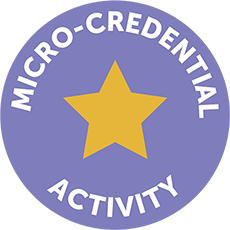Project Parameters Template
Overview
This is the final activity of this module, and it will take more than one meeting to complete. It is broken down into three parts and is meant to be a follow-up and companion to a meeting to uncover your district’s parameters around this project. Ultimately this project parameters will become the basis for your Data Readiness Project Plan and Pitch Deck.
After the meeting, your team should have more information about your district’s parameters pertaining to budget, schedule, personnel, and support needs. The goal of this activity is to document a variety of solutions your district is considering and their alignment with the parameters you and your team have created.

NOTE:
This activity is targeted to district technology leaders.
Let’s explore the template using the below sample.

Feel free to adjust the template as needed, and remember that this is a living document. You may not have all of the parameters defined after just one meeting, and you may not have all of the implications figured out, so keep coming back to this document to track your options and alignment to the core parameters as your planning and discovery evolve.
Before you engage in the project parameters template let’s explore the template using the sample below.
- In the top row “District Defined Project Parameters,” document each parameter to have this information available as a reference while you consider various solutions.
- After you’ve documented your district’s parameters in each area, notice that phase of work and the high-level deliverables from each phase are listed in the two leftmost columns.
- For each project phase, evaluate the options available to your district. The template breaks down the options between doing the work with an internal team vs. a contractor team. For each option, go across the row and note the implications that taking one approach versus the other might have on the established parameters. Finally, remember that you have the flexibility to change the options. It doesn’t need to be internal versus contractor. You can compare multiple internal options, multiple external options, etc.
Now It’s Your Turn


Utilize the spreadsheet titled “Implementation Plan: Project Parameters Template 2.0” in your resource folder. Feel free to adjust the template as needed, and remember that this is a living document.
You may not have all of the parameters defined after just one meeting, and you may not have all of the implications figured out, so keep coming back to this document to track your options and alignment to the core parameters as your planning and discovery evolve.

Next Steps
Now that you have examined some options and their fit with your project parameters, it is time to take action on them. The questions below are designed to help ensure that you have taken an honest look at the fit of your options against the parameters so you can move forward with confidence.
Whatever your options were, be sure to include some verbiage in your project plan and/or contracts that point back to the project parameters, which can serve as your north star during implementation. This will help to keep you focused on achieving the outcomes you set in the parameters.
Also, remember that you can be flexible with this exercise. Perhaps you find that one of your options checks most or all of the boxes of your project parameters. If this is the case, that’s great. You probably have come to your decision. What is more likely is that you have a split of some kind and the answer is not completely clear yet. Here are some things you should consider:
- Is a blended approach a possibility? In the example above where we use in-house resources versus third-party vendors as our options, there might be the possibility to blend the two.
- Staff augmentation contracts are common and can add only the resources that are lacking.
- If none of your options meets enough of your criteria, don’t hesitate to do another round of evaluation with new options or modified options.
- Can you consider alternate technology stacks (the family of components in a technology infrastructure, for instance a Microsoft tech stack includes MS Azure, MS SQL Server, the .NET Framework, and more) that better fit your available skill sets?
- Does the budget accommodate the full range of the solution you’re pursuing? Could the project be phased to produce a proof-of-concept that will help you provide demonstrations that show value and build excitement, which might translate into additional funds for another phase of work?